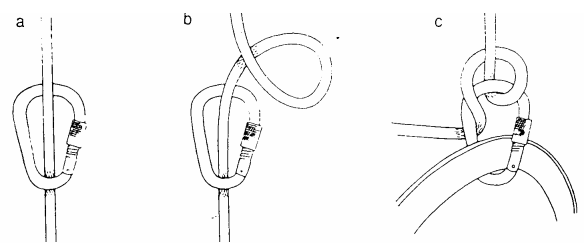
What is Belaying?
Belaying is a method of applying friction to the rope to control the amount of rope that is paid out or taken in. It is also used to arrest a climber that has fallen or to control the rate of descent of a load from a higher elevation to a lower elevation. The belay man must be anchored to a suitable anchor to prevent him from being pulled out of his belay position.
Body belay
Body belay is used where the rope runs around the belayer’s body creating friction. To control the rope, there are two basic types of body belays: Standing and Sitting. Sitting is preferred because it offers the most stable position.
Mechanical belays
Equipment is used to provide friction to control the rate of descent. There are a variety of devices in mountaineering that are used to construct a mechanical belay. One of the most often used that requires little equipment is the munter hitch belay. Ensure when conducting a munter hitch belay that you use a locking carabiner.

Actions taken when performing duties as a belay man.
- “Brake” Command given to the belay man to secure the rope and to not pay any more rope out.
- “Slack” This is a command given to the belay man to move to the slack position so rope can be paid out. The belay man does not push rope to the climber or load, the climber pulls what he needs.
- “Up rope” This command is given to the belay man to tell him to take in all the slack between him and the climber or load. Once all slack is taken in, the belay man will go to the brake position.
- “Tension” This command is given to the belay man to tell him to take up all the slack between him and the climber or load, pull the rope tight, and go to the brake position.







